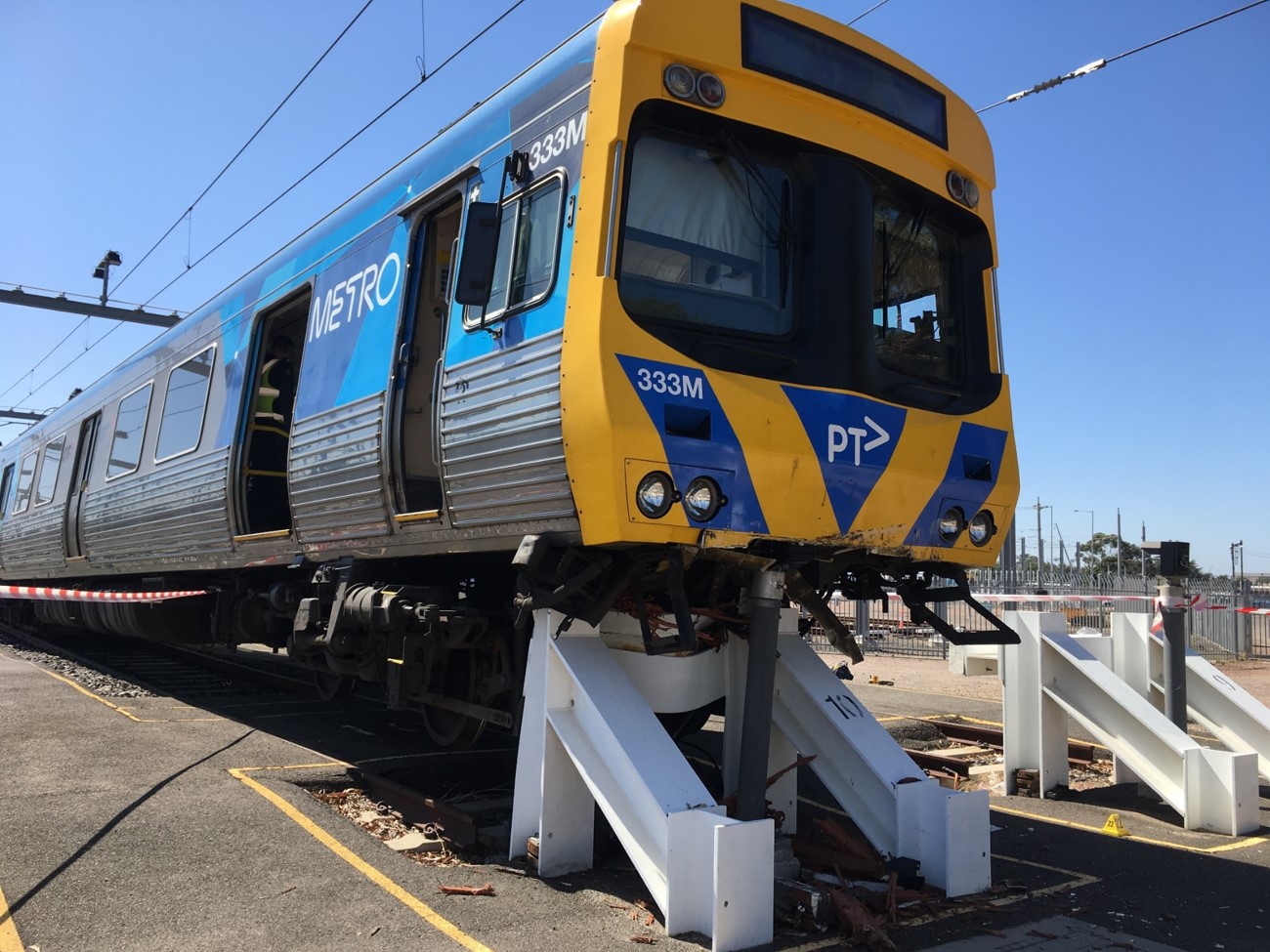
Source: ONRSR
The slow-speed collision of an empty passenger train into a buffer stop on 25 February 2019 highlights the importance of train safety systems to protect against driver error and incapacitation, an ATSB investigation notes.
After its passengers had disembarked, Metro Trains Melbourne train TD 6591 departed Newport Station for a siding where it was to be stabled (parked and secured). As the train approached the stabling location, the brakes were not applied in sufficient time to stop the train and it collided with the buffer stop.
The collision resulted in substantial damage to the front of the train and the buffer stop, and the driver was hospitalised with minor injuries.
In subsequent interviews the driver reported losing consciousness for a period of time prior to the collision, recalling entering the siding but having no other recollections until after impact. A subsequent medical examination found the driver may have fainted due to dehydration and lack of nutrition.
Analysis of data from the driver cabin’s Vigilance Control Event Recorder System (VICERS) showed that a brake application consistent with emergency braking was made about 1.5 seconds before impact, but that was after passing the required stopping point.
Train safety systems are an important protection against driver error and incapacitation.
“The driver may have been incapacitated immediately prior to the accident and therefore temporarily lost awareness, leading to the train not stopping at the designated stopping point as the driver did not apply the brakes in sufficient time,” said ATSB Director Transport Safety Dr Stuart Godley.
“However, due to limited and conflicting evidence the cause, duration and presence of incapacitation could not be determined.”
While the train was equipped with a safety system, comprising a pilot valve as part of the master controller, that was designed to apply the brakes in situations such as driver incapacitation, it did not activate in this incident. The recorded data indicated that sufficient pressure was maintained on the master controller, and therefore the only aspect of the train safety system that could have activated and applied the brakes to protect against driver incapacitation was not triggered.
Post-accident testing of the train’s braking system and the master controller hand pilot valve found no faults that would have contributed to a failure to stop.
“Train safety systems are an important protection against driver error and incapacitation,” Dr Godley noted.
“In addition, drivers are reminded to maintain their health and fitness for work to reduce the likelihood of incapacitation including maintaining adequate levels of nutrition and hydration as well as consideration of the potential impact of fatigue,” Dr Godley said.
Information on fatigue is available on the ATSB website.
Read the final report: Collision of passenger train TD 6591 with buffer stop, Newport siding, Victoria, on 25 February 2019


